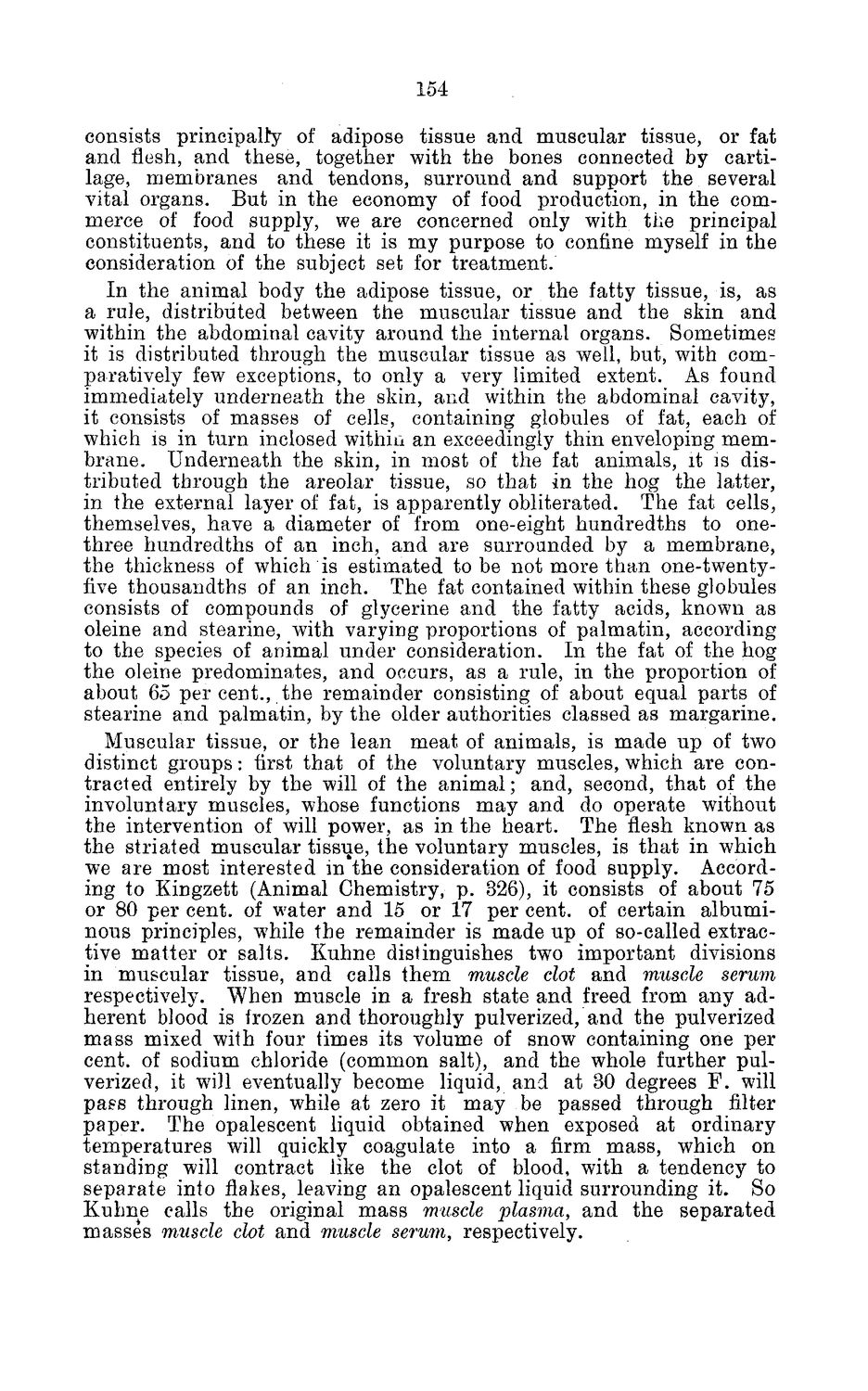| |
| |
Caption: Board of Trustees Minutes - 1884
This is a reduced-resolution page image for fast online browsing.

EXTRACTED TEXT FROM PAGE:
154 consists principalry of adipose tissue and muscular tissue, or fat and flesh, and these, together with the bones connected by cartilage, membranes and tendons, surround and support the several vital organs. But in the economy of food production, in the commerce of food supply, we are concerned only with the principal constituents, and to these it is my purpose to confine myself in the consideration of the subject set for treatment. In the animal body the adipose tissue, or the fatty tissue, is, as a rule, distributed between the muscular tissue and the skin and within the abdominal cavity around the internal organs. Sometimes it is distributed through the muscular tissue as well, but, with comparatively few exceptions, to only a very limited extent. As found immediately underneath the skin, and within the abdominal cavity, it consists of masses of cells, containing globules of fat, each of which is in turn inclosed within an exceedingly thin enveloping membrane. Underneath the skin, in most of the fat animals, it is distributed through the areolar tissue, so that in the hog the latter, in the external layer of fat, is apparently obliterated. The fat cells, themselves, have a diameter of from one-eight hundredths to onethree hundredths of an inch, and are surrounded by a membrane, the thickness of which is estimated to be not more than one-twentyfive thousandths of an inch. The fat contained within these globules consists of compounds of glycerine and the fatty acids, known as oleine and stearine, with varying proportions of palmatin, according to the species of animal under consideration. In the fat of the hog the oleine predominates, and occurs, as a rule, in the proportion of about 65 per cent., the remainder consisting of about equal parts of stearine and palmatin, by the older authorities classed as margarine. Muscular tissue, or the lean meat of animals, is made up of two distinct groups: first that of the voluntary muscles, which are contracted entirely by the will of the animal; and, second, that of the involuntary muscles, whose functions may and do operate without the intervention of will power, as in the heart. The flesh known as the striated muscular tissue, the voluntary muscles, is that in which we are most interested in the consideration of food supply. According to Kingzett (Animal Chemistry, p. 326), it consists of about 75 or 80 per cent, of water and 15 or 17 per cent, of certain albuminous principles, while the remainder is made up of so-called extractive matter or salts. Kuhne distinguishes two important divisions in muscular tissue, and calls them muscle clot and muscle serum respectively. When muscle in a fresh state and freed from any adherent blood is frozen and thoroughly pulverized, and the pulverized mass mixed with four times its volume of snow containing one per cent, of sodium chloride (common salt), and the whole further pulverized, it will eventually become liquid, and at 30 degrees F . will pass through linen, while at zero it may be passed through filter paper. The opalescent liquid obtained when exposed at ordinary temperatures will quickly coagulate into a firm mass, which on standing will contract like the clot of blood, with a tendency to separate into flakes, leaving an opalescent liquid surrounding it. So Kuhne calls the original mass muscle plasma, and the separated masses muscle clot and muscle serum, respectively.
| |